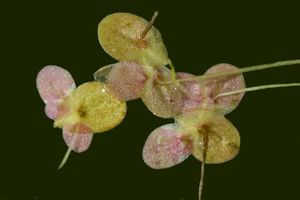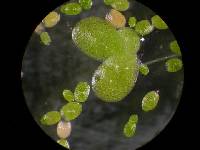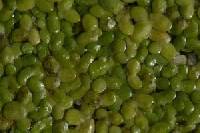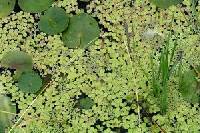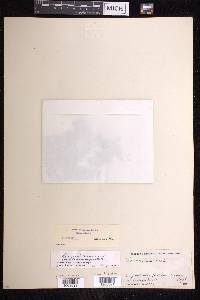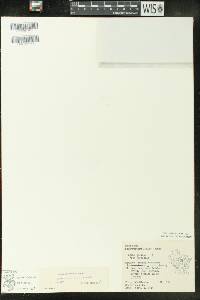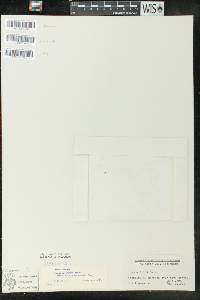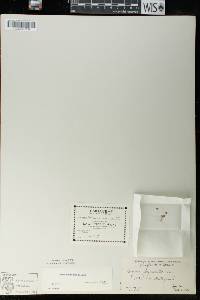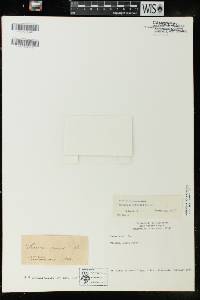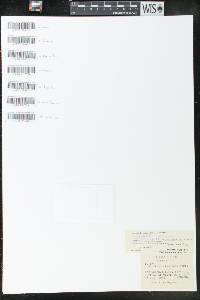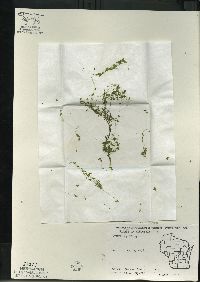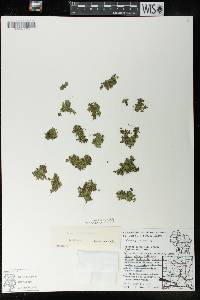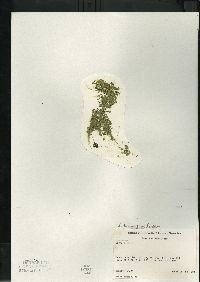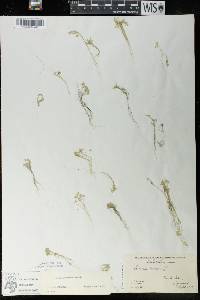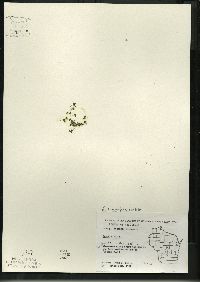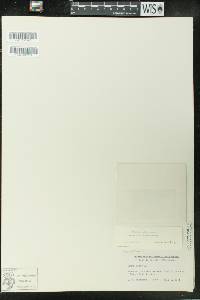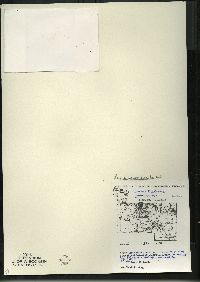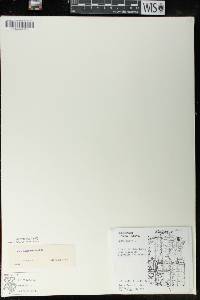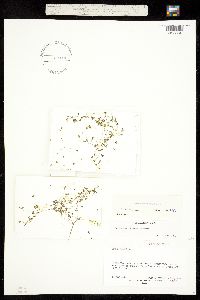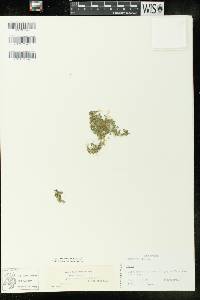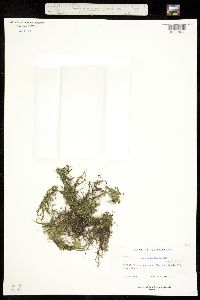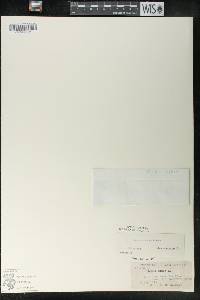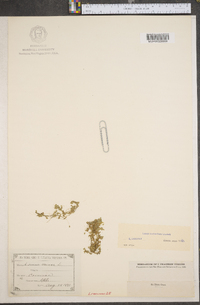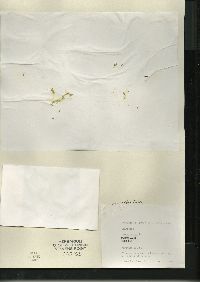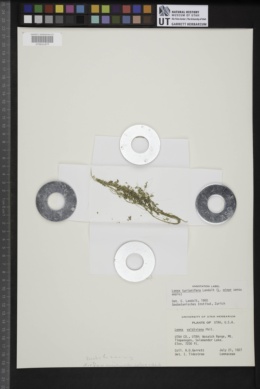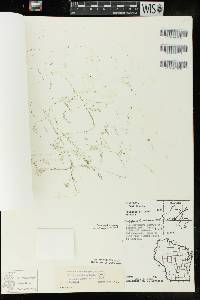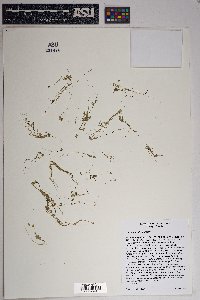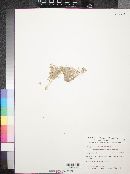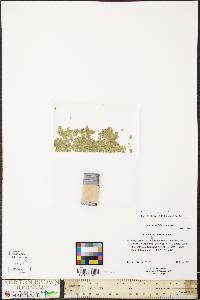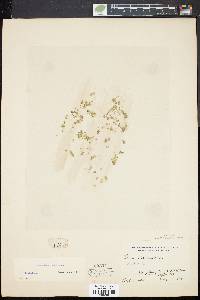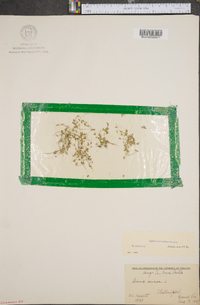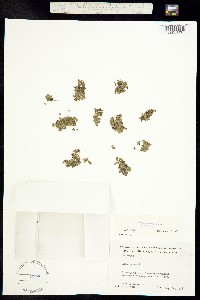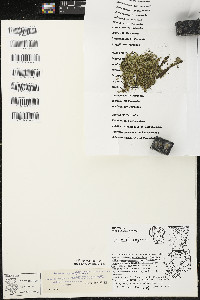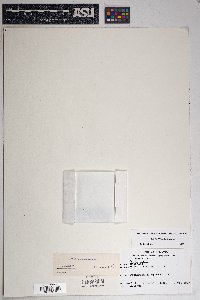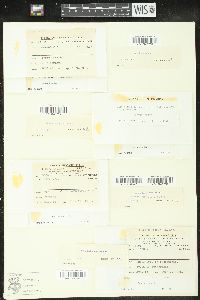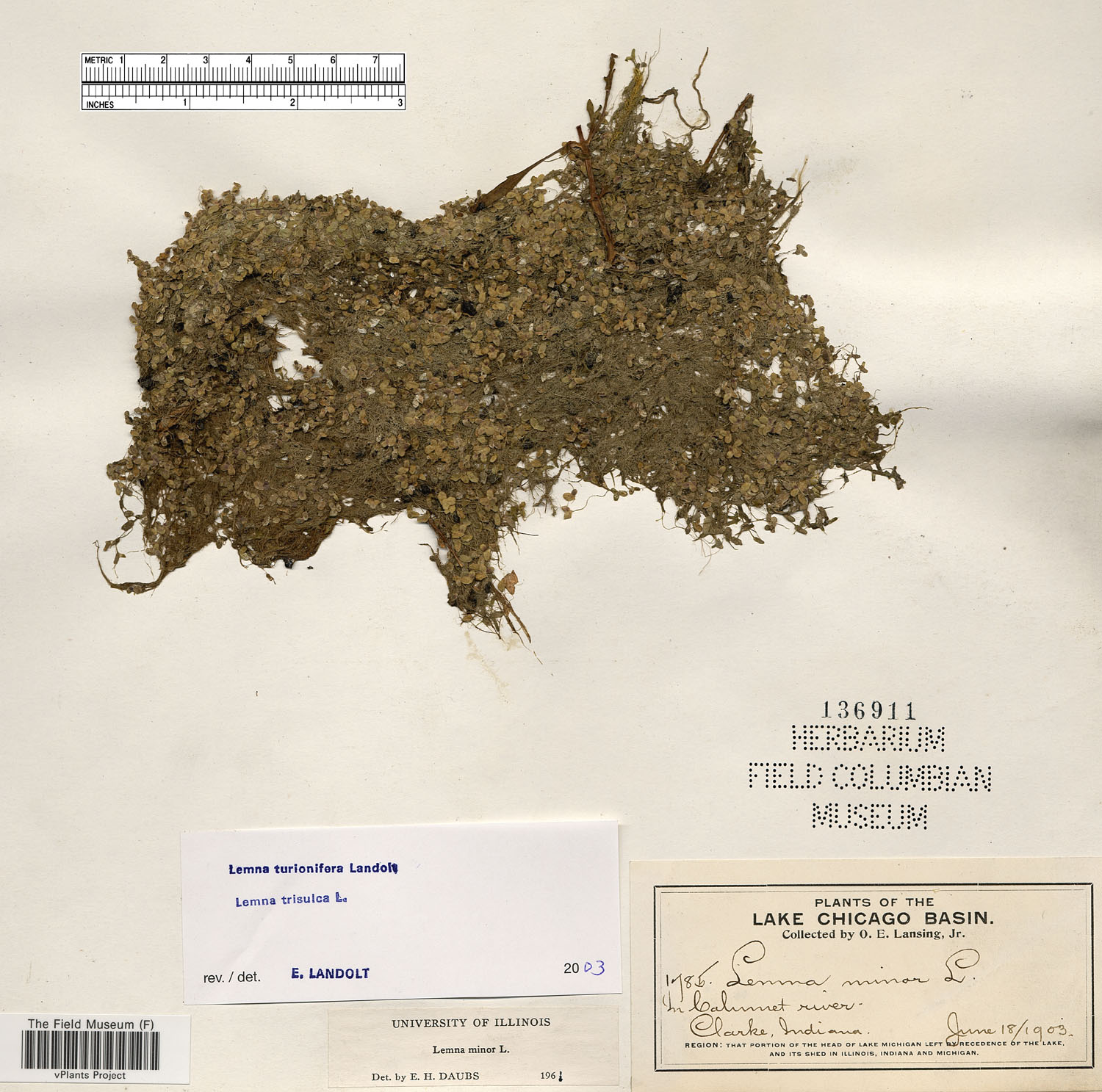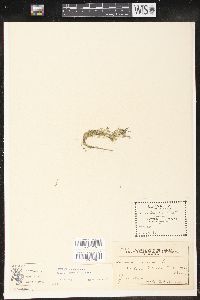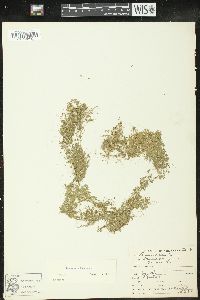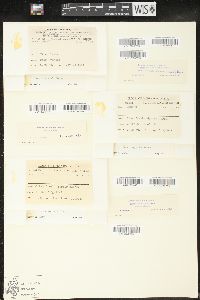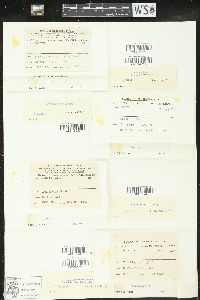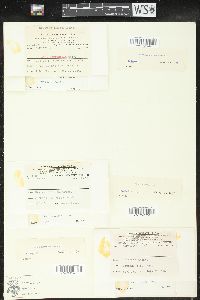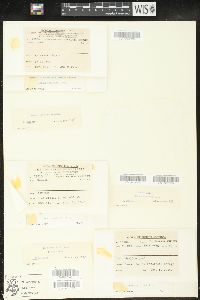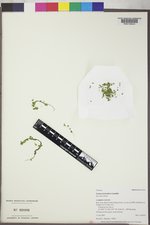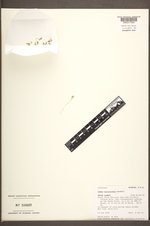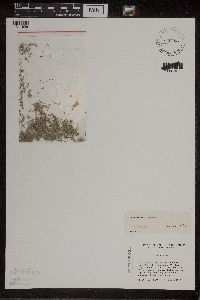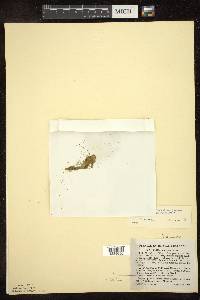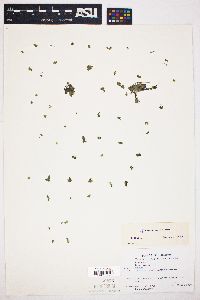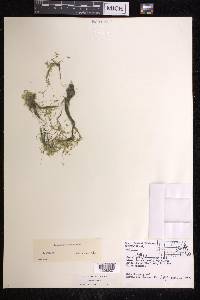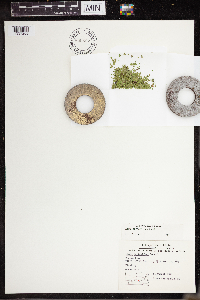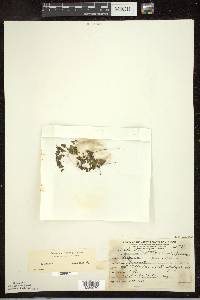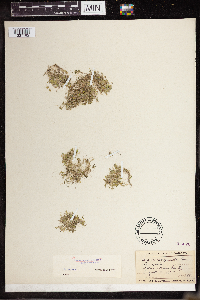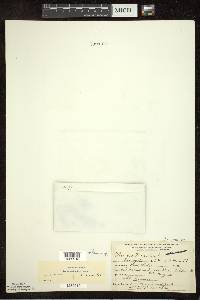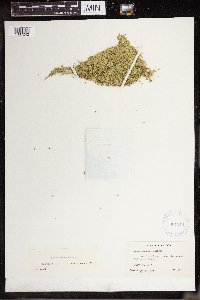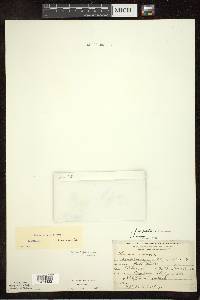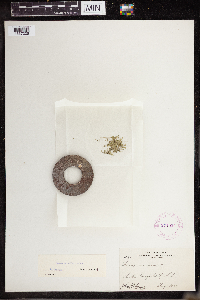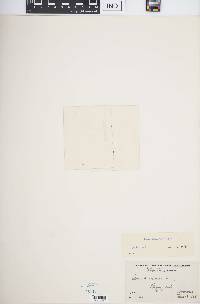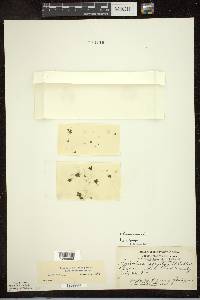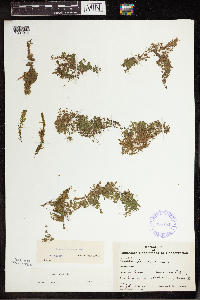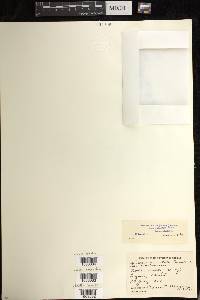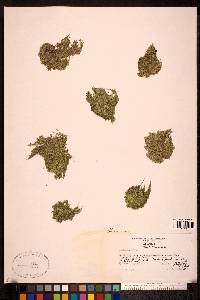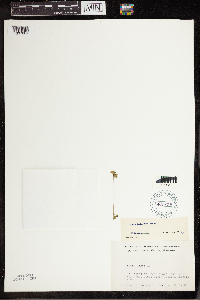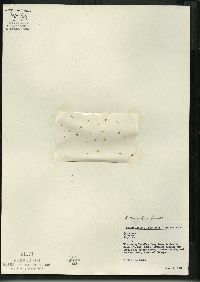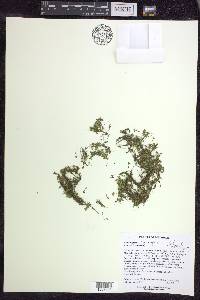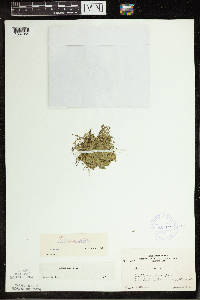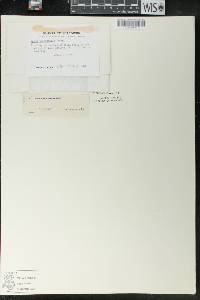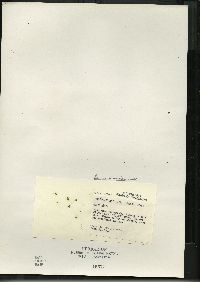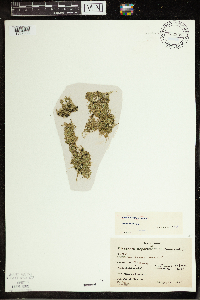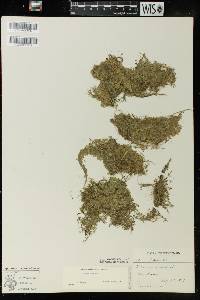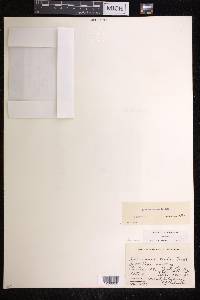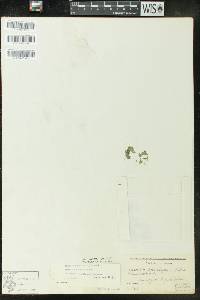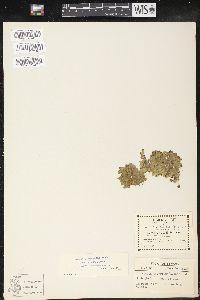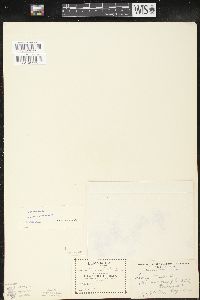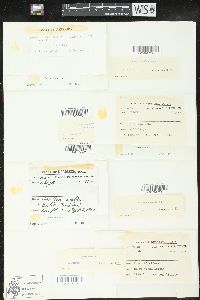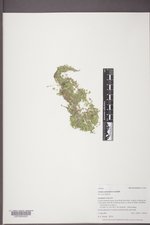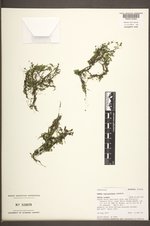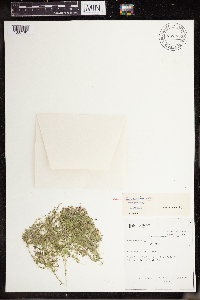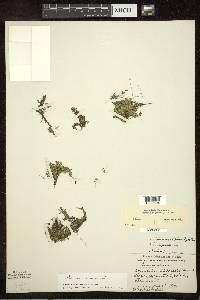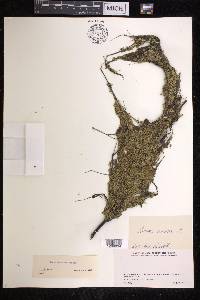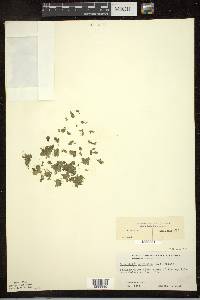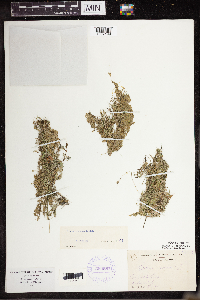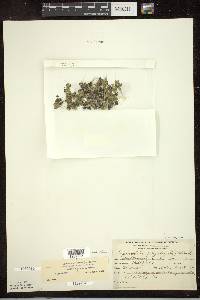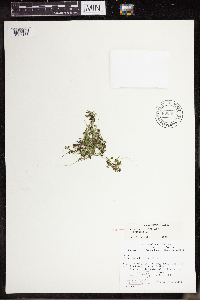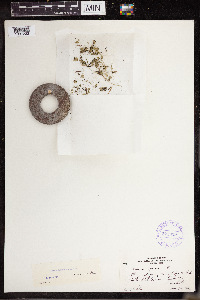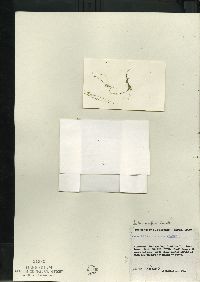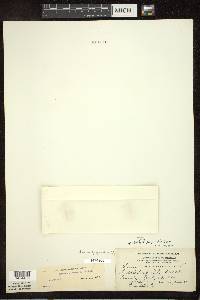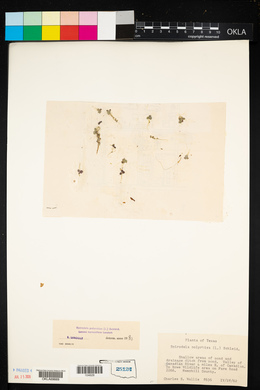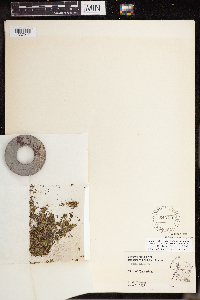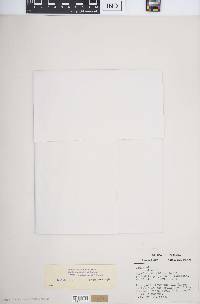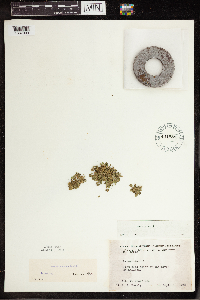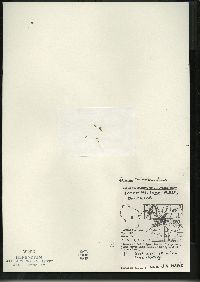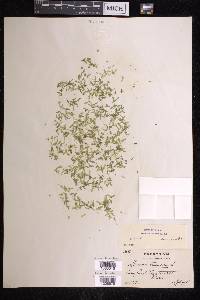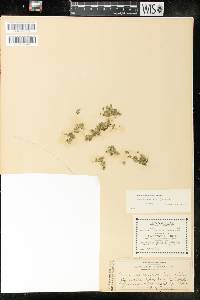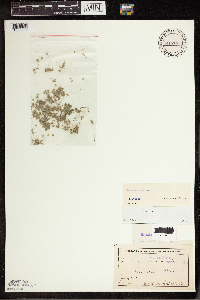Lemna turionifera
|
|
|
|
Family: Araceae
Turion Duckweed
|
Roots shorter than 15 cm, tip mostly rounded; sheath not winged. Stipes white, small, often decaying. Fronds floating, 1 or 2--few, coherent in groups, obovate, scarcely gibbous, flat, 1--4 mm, 1--1.5 times as long as wide, margins entire; veins 3, greatest distance between lateral veins near or distal to above middle; papillae distinct on midline of upper surface (apical papilla scarcely larger than others); lower surface often red (more intensely so than on upper), coloring beginning at attachment point of root, upper surface (especially near apex) sometimes with red spots; air spaces to 0.3 mm; turions sometimes present, rootless, olive to brown, 0.8--1.6 mm diam., sinking to bottom. Flowers: ovaries 1-ovulate, utricular scale with narrow opening at apex. Fruits 0.5--0.6 mm, not winged. Seeds with 30--60 indistinct ribs, staying within fruit wall after ripening. 2n = 40, 42 (G), 50, 80. Flowering (occasional) summer. Mesotrophic to eutrophic, quiet waters, in continental, temperate regions; 0--3700 m; St. Pierre and Miquelon; Alta., B.C., Man., N.B., Nfld. and Labr., N.W.T., N.S., Ont., P.E.I., Que., Sask., Yukon; Ala., Alaska, Ariz., Calif., Colo., Conn., Idaho, Ill., Ind., Iowa, Kans., Mass., Mich., Minn., Mo., Mont., Nebr., Nev., N.J., N.Mex., N.Y., N.Dak., Ohio, Okla., Oreg., Pa., R.I., S.Dak., Tex., Utah, Vt., Wash., W. Va., Wis., Wyo.; Mexico (Baja California); Eurasia. I know of no specimens of Lemna turionifera from Maine, New Hampshire, St. Pierre, and Miquelon, or from New Jersey, but the species is to be expected there.
Plant: small aquatic plant Leaves: FRONDS floating on the water's surface, single or 2 to a few cohering in small groups, obovate, 1-4 mm long, 1-1.5 times as long as wide, flat, scarcely gibbous, without a green stalk but with a very small white stipe that often decays; margins entire; nerves 3, the greatest distance between the laterals near or above the middle; papillae distinct on midline, the apical papilla not larger than the others); upper surface (especially near the apex) sometimes with red spots; lower surface often red colored, the red coloring beginning at attachment point of the root; largest air spaces up to 0.3 mm long Flowers: occasional, 1-ovulate, the small utricular scale with a narrow opening at the top Fruit: 0.5-0.6 mm long, not winged. Seeds: with 30-60 indistinct ribs Misc: Mesotrophic to eutrophic, quiet waters; 1500-2700 m (5000-9000 ft); Jun-Aug Notes: root up to 15 cm long, the sheath unwinged, the tip mostly rounded; turions sometimes present, small, rootless, olive to brown REFERENCES: Landolt, Elias. 1992. Lemnaceae. Ariz.-Nev. Acad. Sci. 26(1)2. Aquatic herb Flowers: occurring occasionally, lacking sepals and petals, with two stamens, surrounded by a membraneous scale with a narrow opening at the tip. Fruit: bladder-like (utricle), thin-walled, 0.5 - 0.6 mm long, seeds having 30 - 60 indistinct ribs and remaining in fruit wall after ripening. Roots: to 15 cm long with a typically rounded tip. Plant body: not differentiated into stem and leaves, floating or near surface, one to a few attached, upper surface green with occasional red spots near tip, lower surface usually red beginning at root attachment, 1 - 4 mm long, one to one and a half times as long as wide, flattened to slightly inflated (to 2 mm thick) on one side, inversely egg-shaped, three-veined, projections distinct on midvein of upper surface. Air spaces inside the plant body are to 0.3 mm in diameter. Winter buds: rootless, olive to brown, 0.8 - 1.6 mm in diameter, sinking to the bottom of the body of water. Similar species: Lemna aequinoctialis, Lemna perpusilla, Lemna turionifera, and Lemna minor have two to four veins and tend to be wider than 1.5 mm. Lemna aequinoctialis and L. perpusilla can be distinguished from L. turionifera by having roots that are usually shorter than 3 cm with a pointed tip and plant bodies that are green throughout. Lemna minor has very tiny projections with the one near the tip being the largest. Flowering: summer Habitat and ecology: Quiet waters. Occurence in the Chicago region: native Etymology: Lemna is the Greek name for a water weed. Turionifera means "bearing turions," which are winter buds. Author: The Morton Arboretum From Flora of Indiana (1940) by Charles C. Deam Indiana Coefficient of Conservatism: C = 3 Wetland Indicator Status: OBL |
|
|
|

